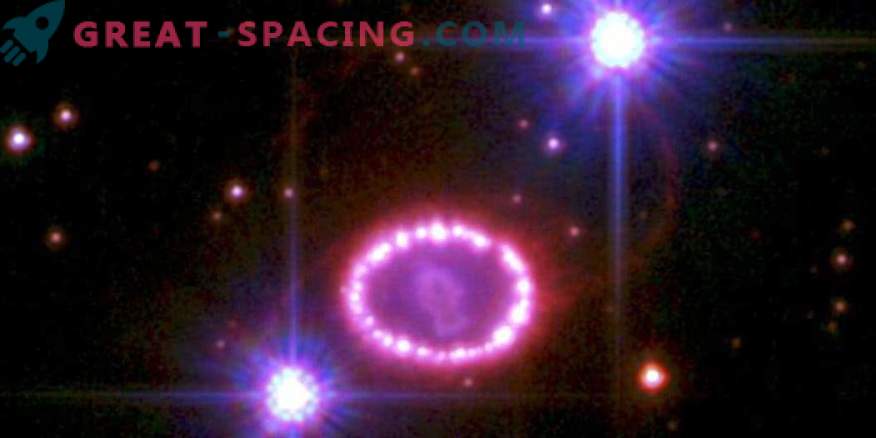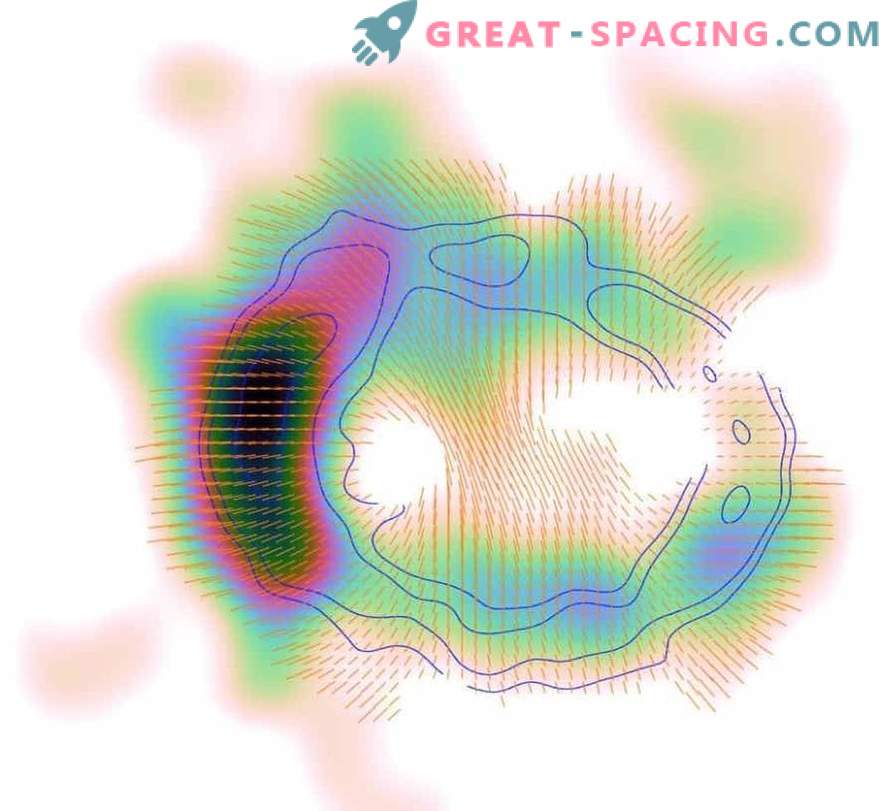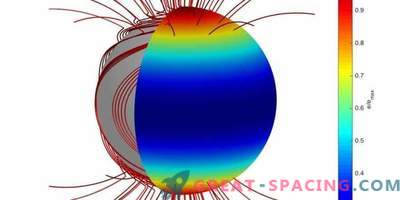
A snapshot from the Hubble Space Telescope shows the remainder of 1987A. Here is a bright inner ring that shines upon contact with material from a supernova explosion. The diameter covers about 1 light year. It is unclear what caused the two larger and weaker rings.
For the first time, scientists were able to directly observe magnetism in one of the most studied objects in astronomy. We are talking about the remainder of supernova 1987A (SN 1987A) - a dying star that appeared in the sky more than 30 years ago.
It turns out that magnetism is about 50,000 times weaker than a magnet on a refrigerator. And this force was able to measure at a distance of 1.6 million trillion km. SN 1987A in February 1987 opened Ian Shelton. He lives on the territory of the Large Magellanic Cloud, 168,000 light-years distant from us. It was the first supernova that can be seen with the naked eye after Johann Kepler discovered the supernova 400 years ago.

The remainder map of SN 1987A with short orange lines showing the orientation of the magnetic field
In the 35 years that have passed since the discovery of a supernova, the material displaced by the explosion, as well as the shock wave, went outward through the gas and dust surrounding the star until the moment of the explosion. Today we look at the remains and see that the rings of the material are absorbed by the expanding fragments of the supernova and shock waves. Using the compact Australian array and the observatory, we were able to observe the magnetic field, studying the released rays. By analyzing the properties of radiation, scientists were able to follow the magnetic field. It turns out that the residual magnetic field was not chaotic and shows the degree of order.
Researchers knew that when supernova remnants grow older, their magnetic fields stretch and line up into ordered patterns. As a result, the observation showed that the supernova remnant is able to restore order in a magnetic field in a relatively short period (30 years).
The earth’s magnetic field lines move north and south, causing the compass to point to planetary poles. But the magnetic field lines in SN 1987A resemble the spokes of a bicycle wheel. Scientists will continue to monitor the ever-evolving remnant. As you expand, you can track the shape of the magnetic field to study the changes that are occurring.











































